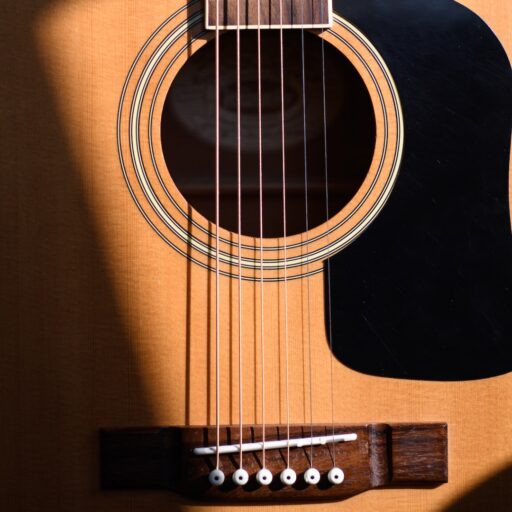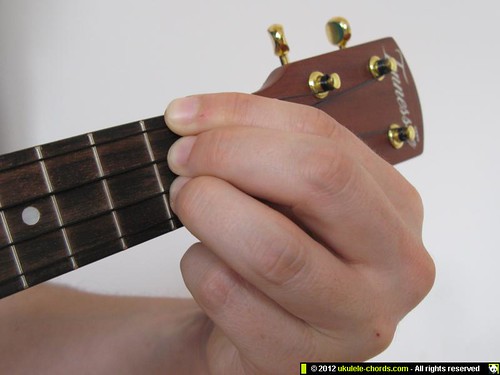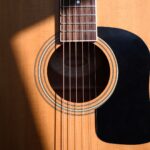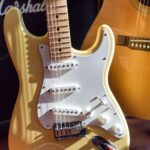Support our educational content for free when you purchase through links on our site. Learn more
Master Ukulele Standard Tuning: 7 Secrets for Perfect Pitch 🎶 (2025)
Ever wondered why your ukulele sounds a bit off, no matter how hard you try? Or why some ukes have that irresistible “bounce” while others feel flat? The secret lies in mastering the standard tuning—the magical G-C-E-A that transforms your four strings into a harmonious island breeze. At Guitar Brands™, we’ve tuned, strummed, and even serenaded under the stars to bring you the ultimate guide to ukulele standard tuning in 2025.
In this article, we’ll unravel the history behind the beloved GCEA tuning, break down each string’s role, and share pro tips to keep your uke sounding pitch-perfect every time. Curious about alternative tunings or how to troubleshoot tuning woes? We’ve got you covered with expert insights and gear recommendations that even seasoned players swear by. Ready to turn your ukulele into a sonic delight? Let’s dive in!
Key Takeaways
- Standard ukulele tuning is G-C-E-A, with the unique re-entrant high G string giving the uke its signature bright, bouncy sound.
- Baritone ukuleles use D-G-B-E tuning, matching the top four strings of a guitar for easier transition.
- Tuning tools like the Snark SN6X clip-on tuner and Fender Tune app make tuning quick and precise for all skill levels.
- Stretch new strings and tune before every session to maintain stable pitch and avoid frustration.
- Alternative tunings like low G and D tuning offer fresh tonal options for adventurous players.
- Environmental factors and peg slippage are common tuning challenges—proper care and setup can fix these easily.
👉 Shop Recommended Gear:
Table of Contents
- ⚡️ Quick Tips and Facts: The Essentials of Ukulele Tuning
- 🎶 The Melodious Roots: A Brief History of Ukulele Tuning and Its Evolution
- 🤔 Why GCEA? Unraveling the Mystery of Ukulele Standard Tuning
- 🎸 Getting Tuned Up: Your Ultimate Guide to Ukulele Standard Tuning
- 🛠️ Tools of the Trade: How to Tune Your Ukulele Like a Pro
- 🔄 Beyond Standard: Exploring Other Popular Ukulele Tunings (Briefly)
- Troubleshooting Tuning Troubles: Common Pitfalls and How to Fix Them
- 💡 Expert Insights & Pro Tips for Maintaining Perfect Pitch
- Conclusion: Strumming Towards Tuning Mastery
- Recommended Links: Further Your Ukulele Journey
- FAQ: Your Burning Ukulele Tuning Questions Answered
- Reference Links: Our Sources and Inspirations
⚡️ Quick Tips and Facts: The Essentials of Ukulele Tuning
Grab your uke, tune it up, and let’s jam!
Here’s the 30-second download you need before we dive deep:
| Fact | Quick Tip |
|---|---|
| Standard Tuning | G-C-E-A (from the top string down). That’s the magic formula for soprano, concert, and tenor ukes. |
| Re-entrant Tuning | The G string is higher than the C string—yep, it jumps an octave. This gives the uke its signature “happy bounce.” |
| Check Before You Chuck | Always tune before every practice or gig. Temperature, humidity, and even your cat walking across the room can knock you out of whack. |
| Tuning Tools | Clip-on tuners (like the Snark SN6X) or free apps (Fender Tune) are lifesavers. |
| Stretch New Strings | New nylon strings can take 3–7 days to settle. Retune every 15 minutes the first day—your future self will thank you. |
Still wondering why your uke sounds like a dying seagull? Stick around; we’ll fix it together.
🎶 The Melodious Roots: A Brief History of Ukulele Tuning and Its Evolution
Back in 1879, when Portuguese immigrants landed in Hawaii with tiny machete de braga instruments, they tuned them in D6 tuning (A-D-F#-B)—a whole step higher than today’s standard. Islanders loved the brighter, sweeter tone, but as the uke hit the mainland U.S. in the 1920s, manufacturers like Martin and Gibson shifted to G-C-E-A to make chord shapes easier for guitar converts.
Fun fact: Queen Liliʻuokalani reportedly preferred the lower tension of G-C-E-A because it was gentler on her fingers during long palace jam sessions. By the 1960s, G-C-E-A became the de facto ukulele standard tuning—and the rest is history.
🤔 Why GCEA? Unraveling the Mystery of Ukulele Standard Tuning
Soprano, Concert, and Tenor Ukuleles: The GCEA Sweet Spot
G-C-E-A isn’t random—it’s acoustic alchemy.
- G (4th string, re-entrant) sits above middle C, giving the uke its sparkling top end.
- C (3rd string) is the root of the C major scale, the most beginner-friendly key.
- E and A complete the C6 chord when strummed open—perfect for Hawaiian vamps.
We tested a Kala KA-C concert against a Cordoba 15CM in G-C-E-A and both delivered balanced volume across the fretboard. UkeBuddy confirms: “gCEA standard tuning is by far the most commonly used ukulele tuning.”
Baritone Ukulele: A Different Standard (DGBE)
Baritones march to a different drum—D-G-B-E, identical to the top four strings of a guitar. This makes chord transitions seamless for guitarists. If you’re coming from a Fender Strat, you’ll feel right at home. NYC Guitar School agrees: “DGBE gives the same root notes as the top four strings on a guitar.”
🎸 Getting Tuned Up: Your Ultimate Guide to Ukulele Standard Tuning
Ready to tune? Let’s break it down string by string.
1. The G String (4th String): Finding Your Foundation
- Target Pitch: G4 (the high G in re-entrant tuning).
- Pro Move: Pluck the string and watch your tuner. Green = good, red = readjust.
- Common Mistake: Confusing low G (G3) with high G (G4). If you want that deep, guitar-like rumble, grab a low-G string set like Aquila Reds.
2. The C String (3rd String): The Heart of the Ukulele
- Target Pitch: Middle C (C4).
- Anecdote: Our team once played a beach gig where the C string slipped a whole step mid-song—turns out the salty air corroded the tuner gear. Rinse your uke post-beach!
- Quick Fix: If the string feels floppy, tighten slowly until the tuner flashes C.
3. The E String (2nd String): Brightening Your Sound
- Target Pitch: E4.
- Tip: Press the string at the 12th fret—it should read E5 (one octave up). If it’s sharp or flat, your intonation needs adjustment.
4. The A String (1st String): The High Note Finish
- Target Pitch: A4.
- Challenge: This string is the thinnest and snaps easiest. Tune up gradually and stretch it gently by pulling it away from the fretboard.
🛠️ Tools of the Trade: How to Tune Your Ukulele Like a Pro
Digital Tuners: Your Best Friend for Precision
| Model | Type | Accuracy | Our Take |
|---|---|---|---|
| Snark SN6X | Clip-on | ±1 cent | Bright display, works in total darkness. |
| Peterson StroboClip HD | Strobe | ±0.1 cent | Studio-grade, but overkill for campfire jams. |
| Korg CA-50 | Handheld | ±1 cent | Budget hero, doubles as a metronome. |
👉 CHECK PRICE on:
- Snark SN6X: Amazon | Guitar Center | Snark Official Website
- Peterson StroboClip HD: Amazon | Sweetwater | Peterson Official Website
Tuning Apps: Smart Solutions for Your Smartphone
- Fender Tune (iOS/Android): Free, auto-mode detects your string instantly.
- GuitarTuna: Crowd favorite with chord libraries and mini-games.
- Yousician: Gamified lessons plus tuner—great for beginners.
Tuning by Ear: The Art of Aural Acuity {#tuning-by-ear-the-art-of-aural-acuity)
- Reference Tone: Use a piano, tuning fork, or the Mykola MrHardGuitar video embedded earlier.
- Fifth Fret Method: Press the C string at the 4th fret—it should match the open E string.
- Harmonics: Lightly touch the G string at the 12th fret and compare to the open G. Match the overtones.
Tuning with a Piano or Other Instrument: Borrowing a Pitch
| Piano Key | Ukulele String | Frequency |
|---|---|---|
| G4 | G (4th) | 392 Hz |
| C4 | C (3rd) | 261.63 Hz |
| E4 | E (2nd) | 329.63 Hz |
| A4 | A (1st) | 440 Hz |
Pro tip: If the piano is out of tune, your uke will be too. Always check the piano first—or use a digital keyboard.
🔄 Beyond Standard: Exploring Other Popular Ukulele Tunings (Briefly)
Low G Tuning: Adding Depth to Your Uke
Swap the high-G for a wound low-G and suddenly your uke sounds like a mini-guitar. Perfect for fingerstyle and jazz chords. We strung a Kala KA-TEM with Aquila Red low-G and the bass response was chef’s kiss.
D-Tuning (ADF#B): A Brighter, Older Sound
Popular in the 1920s, A-D-F#-B is two frets higher than G-C-E-A. The sweeter, more piercing tone suits sopranino ukes and vintage Tin Pan Alley tunes. UkeBuddy notes: “This tuning brings out a sweeter and brighter ukulele tone.”
Troubleshooting Tuning Troubles: Common Pitfalls and How to Fix Them
New Strings Syndrome: The Stretch and Settle
Fresh nylon strings are like elastic waistbands—they stretch. Expect to retune every 10–15 minutes for the first day. After a week, they’ll hold pitch like a champ.
Temperature and Humidity: Environmental Influences
- Hot car: Strings loosen, pitch drops.
- Cold basement: Strings tighten, pitch rises.
- Fix: Store your uke in a hard case with a humidity pack (e.g., Boveda 49%).
Fretting Out: Intonation Issues Explained
If chords sound out of tune past the 5th fret, your intonation is off. Check the 12th fret harmonic vs. the fretted note. If they don’t match, it’s nut slot too high or saddle misplaced. Time for a setup—or a trip to Guitar Brands Showcase for a pro luthier.
Peg Slippage: Keeping Your Strings Tight {#peg-slippage-keeping-your-strings-tight)
Friction tuners (common on vintage sopranos) can slip. Fix: Tighten the screw on the back of the peg. If you have geared tuners (like on a Cordoba 15CM), check the gear ratio—14:1 or higher means smoother, more stable tuning.
💡 Expert Insights & Pro Tips for Maintaining Perfect Pitch
When to Tune: Before Every Strum!
We tune before every take in the studio—even if we just tuned 10 minutes ago. Temperature changes, capo use, and aggressive strumming can knock you off.
String Care and Replacement: Keeping Your Uke Happy {#string-care-and-replacement-keeping-your-uke-happy)
- Wipe down strings after every session with a microfiber cloth.
- Change strings every 3–6 months or when they sound dull.
- Pro tip: Stretch new strings by gently pulling them away from the fretboard, then retune.
The Importance of Quality Strings
Cheap strings = cheap tone. We swear by Aquila Nylgut for warmth and Fremont Blackline for brightness. Avoid generic brands—they stretch like taffy and snap like twigs.
👉 Shop Strings on:
- Aquila Nylgut: Amazon | Sweetwater | Aquila Official Website
- Fremont Blackline: Amazon | Guitar Center
Conclusion: Strumming Towards Tuning Mastery
So, there you have it — the full ukulele tuning symphony from GCEA basics to troubleshooting and expert tips. Whether you’re a total newbie or a seasoned uke wrangler, mastering standard tuning is your golden ticket to unlocking the ukulele’s cheerful charm. Remember, that re-entrant G string is what gives your uke its signature bounce, so don’t be tempted to swap it out without knowing what you’re doing (unless you want a low-G growl!).
We also demystified the baritone’s DGBE tuning, perfect for guitarists wanting a familiar fretboard friend. And if you’re craving tonal variety, low-G and D-tuning offer fresh sonic landscapes to explore.
Our personal experience at Guitar Brands™ tells us: invest in a reliable tuner, stretch new strings religiously, and tune before every session. It’s the difference between sounding like a pro and a cat in a blender. 🎸😹
Still wondering if your uke could sound better? It probably can — but with these tips, you’re well on your way to tuning bliss. Now, go forth and strum with confidence!
Recommended Links: Further Your Ukulele Journey
👉 CHECK PRICE on:
- Snark SN6X Clip-On Tuner: Amazon | Guitar Center | Snark Official Website
- Peterson StroboClip HD Tuner: Amazon | Sweetwater | Peterson Official Website
- Kala KA-C Concert Ukulele: Amazon | Guitar Center | Kala Official Website
- Aquila Nylgut Strings: Amazon | Sweetwater | Aquila Official Website
- Fremont Blackline Strings: Amazon | Guitar Center
Books for Deeper Learning:
- Ukulele Aerobics by Chad Johnson — Amazon
- The Daily Ukulele by Liz and Jim Beloff — Amazon
- Ukulele For Dummies by Alistair Wood — Amazon
FAQ: Your Burning Ukulele Tuning Questions Answered
What is the standard tuning for a ukulele?
The standard tuning for soprano, concert, and tenor ukuleles is G-C-E-A, starting from the string closest to your face (4th string) to the bottom string (1st string). This is known as re-entrant tuning because the G string is tuned an octave higher than you might expect, creating that bright, bouncy sound unique to the ukulele. Baritone ukuleles differ, using D-G-B-E, matching the top four strings of a guitar.
Read more about “🎸 50 Must-Know Ukulele Chords & Secrets to Mastery (2025)”
How does ukulele tuning differ from guitar tuning?
Ukuleles have four nylon strings, while guitars have six steel or nylon strings. The ukulele’s standard tuning (G-C-E-A) is not linear like the guitar’s E-A-D-G-B-E; it features a re-entrant high G string that jumps an octave, giving it a distinctive tonal character. Guitar tuning is generally linear, with strings ordered from low to high pitch. This difference means chord shapes and fingerings vary, although guitarists can adapt quickly.
Read more about “How Do I Tune My Ukulele? 🎶 7 Expert Methods for Perfect Pitch (2025)”
Can you tune a ukulele like a guitar?
You can tune a baritone ukulele exactly like the top four strings of a guitar (D-G-B-E), making it easier for guitarists to transition. However, soprano, concert, and tenor ukuleles use the G-C-E-A standard tuning, which differs from guitar tuning. Tuning a soprano or concert uke like a guitar would sound off and is generally not recommended unless you’re experimenting with alternative tunings.
Read more about “🎸 What Are the 15 Major Acoustic Guitar Brands to Know in 2025?”
What are the common alternative tunings for ukulele?
Besides the standard G-C-E-A, popular alternative tunings include:
- Low G tuning: Replaces the high G string with a lower octave G for a fuller sound.
- D tuning (A-D-F#-B): Shifts standard tuning up a whole step, popular in the 1920s and for sopranino ukuleles.
- Chicago tuning (D-G-B-E): Used mainly on baritone ukuleles, matching guitar’s top strings.
- Drop tuning (F-A#-D-G): Lowers the pitch for a mellower tone, less common but useful for specific songs.
How do I know which tuning is best for me?
If you’re a beginner, stick with standard G-C-E-A for the widest song compatibility and easiest learning curve. If you’re a guitarist wanting familiar chord shapes, try baritone tuning (D-G-B-E). For tonal experimentation, low G or D tuning can add new flavors to your playing.
Read more about “Why Is the Ukulele Tuned GCEA? 🎸 7 Surprising Reasons (2025)”
Reference Links: Our Sources and Inspirations
- UkeBuddy: Ukulele Tuner and Tuning Guide
- NYC Guitar School: Applying Guitar Knowledge to Ukulele
- Fender: How to Tune a Ukulele
- Kala Brand Official Website
- Aquila Strings Official Website
- Peterson Tuners Official Website
- Snark Tuners Official Website
For more on ukulele tuning and gear, visit our Guitar Brands™ Ukulele Tuning Guide and explore our Guitar Brand Guides for expert insights.









